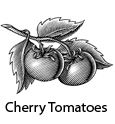Top Ten Veggies to Grow in Your Backyard
by Laura Gardner
|
You can get a lot of mileage out of growing your own vegetables, and not only because they’ll be fresher, healthier, prettier and tastier than anything you can buy in a supermarket. Nothing impresses like a plate of your own tomatoes layered with fresh mozzarella, drizzled with extra virgin olive oil and adorned with aromatic basil leaves. Ari Kurtz ’72, who manages Lindentree farm, a community supported agriculture (CSA) enterprise in Lincoln, Mass., selected the vegetables below for their easy, fruitful personalities and their ability to withstand the trowels and errors of novice gardeners in most hardinest zones. |
|
|
Grow Sun Gold and Sun Cherry varieties in large containers or in the ground. Make sure to give the sprawling vines plenty of room or a high trellis and they’ll produce fruit all season long, providing a handy and delicious snack. |
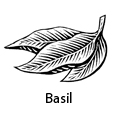 |
Basil can be purple, green, lemon-scented,ruffled or small-leaved, but it is always one of the easiest and most sustainable plants to grow — just keep picking the tip off to prevent the plant from flowering. It will branch out and become bushy, providing aromatic green leaves and the makings for pesto all summer long. |
 |
One jalapeño or Thai hot pepper plant will produce enough fruit and heat to keep your mouth on fire all summer. Fresh-picked peppers freeze very easily — store them in the freezer in a plastic bag and take out as much as you need. |
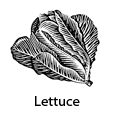 |
Goodbye tasteless, insipid iceberg. The varieties available today for home gardeners range in the hundreds and include the likes of loose leaf Deer Tongue, Buttercrunch and Ruby Red lettuce. Don’t forget to add other greens, such as arugula and mizuna. Try a “cut and come again” variety and you’ll have salads for weeks and weeks. |
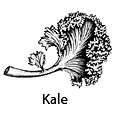 |
Kale is a real survivor in the vegetable kingdom, growing best in cold weather, so plant it later in the season to harvest in the fall or even dig it out from under the snow in December. Its cousin, Swiss chard, is another easy plant to cultivate and the rainbow variety is lovely to behold, too. |
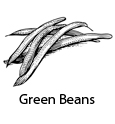 |
You might think beans are downright pedestrian, the plebes of the garden world. But once the soil has warmed up, beans do grow fast, magically producing heavy loads of pods great right from the garden. They’re even better lightly steamed, cooled and tossed in a salade niçoise. |
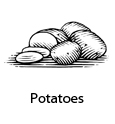 |
These tubers are fun to plant and even more delightful to harvest, especially for kids. You will never find the crimson skin of a newly dug Red Norland in your supermarket’s potato bin. Yukon Gold and Green Mountain potatoes are also among the tastiest spuds. When planting, make sure each seed potato has at least two eyes. |
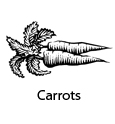 |
Carrots require deep, well-watered soil, but if you tend to them you’ll be rewarded with a freshness and sweetness you never knew existed in this versatile root vegetable. Keep the carrot patch well weeded, as they get fussy when faced with competition. Try a purple variety and don’t peel it. |
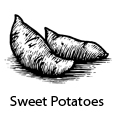 |
Lindentree farm grows Beauregard, a meaty vegetable (not actually a potato) with deep orange flesh that melts in your mouth. These plants do need a long, hot growing season, but can be cultivated even in Northern climes. One thing they don’t need is marshmallows. |
 |
Even when it’s the size of a baseball bat, a garden-grown zucchini is good (especially for zucchini bread) — so imagine what it tastes like when it’s six inches long, or even three. In addition to zucchini, try kousa and Middle Eastern summer squashes, but bear in mind that these plants need lots of room in every direction. You probably need only one plant of each, or just one plant, period. If you still have room, try winter squashes like the lovely-named Delicata and Sweet Dumpling. |
